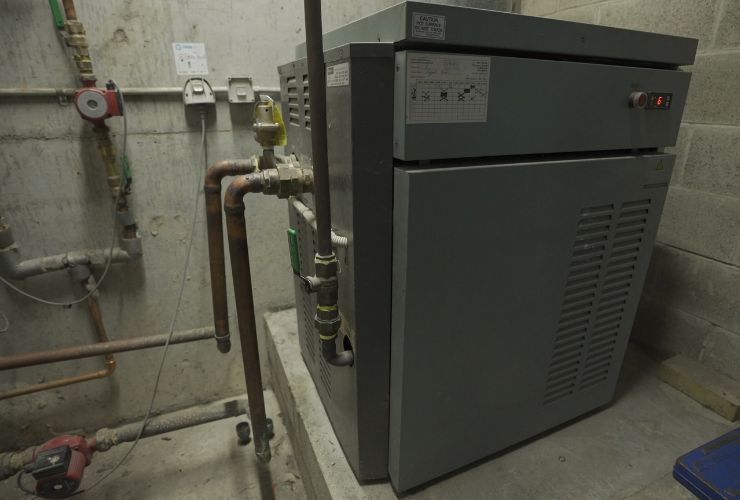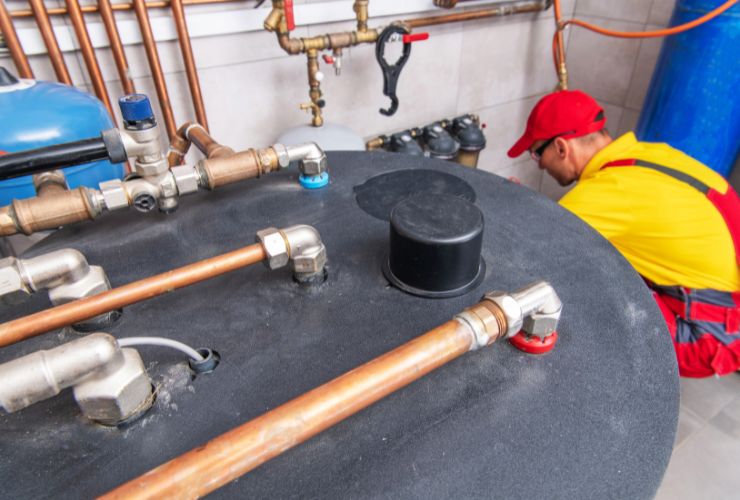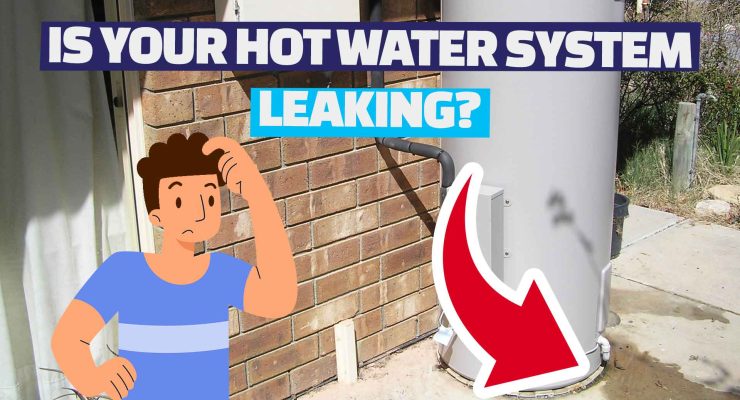Fast read
A hot water diverter is a device that detects surplus solar power in a home not being used and diverts it to heat hot water, rather than sending it back to the grid. This maximises the self-consumption of solar energy.
Direct PV hot water heating directly powers an electric hot water heater, typically using heat pump technology, with DC power from solar panels without conversion to AC. However, once the water is heated, excess power is wasted. Most homeowners prefer to power their entire home, including hot water, using a grid-connected solar PV system.
To enhance savings, some install a timer to heat water during peak solar production. However, for optimised efficiency, a solar diverter is recommended, which can also divert power to other appliances.
Can I use my Solar Panels to Heat Hot Water?
In homes with electric hot water heaters, the hot water heaters are often the appliances with the largest use of electricity. This is at least 25% of the power used within the average home. So if we can find a way to make hot water generation more efficient, then we also have a clear path to lower energy bills. As such, when installing solar panels on your home, it makes sense that you would want to use solar power where possible to heat your hot water.
This is much more cost-effective than using power from electricity. The most practical and efficient solution to this dilemma often comes down to the employment of a technology known as hot water diverters. Hot water diverters are instrumental in leveraging excess solar energy, which is otherwise fed back into the grid, to heat water. This not only optimises solar energy usage but significantly curtails electricity costs in the long term.
Direct PV hot water heating
In this setup, solar panels power an electric hot water heater, usually employing heat pump technology. Here, the DC power from the panels can directly drive the heat pump element without requiring conversion (via an inverter) to AC power for household use.
These hot water systems find application in regions like Western Australia, where grid-connected solar power is limited to 5kW capacity on single-phase homes. Allocating additional PV specifically to power the water heater is sensible since it remains disconnected from the grid. This technology is nevertheless not so popular in other states.
These hot water heaters have also an electric booster element that would be able to power from the grid when there is not enough electricity from the panels to heat the water via solar PV during cloudy periods and rain etc.
In much of the country and for many homes, direct solar hot water systems wouldn’t make sense because they occupy valuable roof space for panels that only serve to heat hot water. Once the hot water is heated, the additional electricity from the panels goes to waste as it cannot be used in the rest of the house.
Moreover, these systems do not possess the ability known as ‘catch power,’ which is the ability to harvest surplus solar power when available. This lack of catch power feature results in a lower level of efficiency and savings as compared to other alternatives.

Hot water heating from grid-connected solar panel systems
The more popular option for most would be to install a solar panel system large enough to power the entire home, including the hot water generation.
In many cases, the easiest and cheapest way to set this up is to have a timer on the water heater so that it turns on and runs in the middle of the day when the solar PV system is generating plenty of electricity and can power the heating of the hot water.
Then set the time to turn on one more time in the evening, when feed-in tariffs are low, for a boost up and one would have found a way for one of the cheapest hot water generation methods.
While this works well when the sun is shining and the solar power system is working full throttle, during poor weather and during the middle of winter, this method carries the risk that the water heater will be to a large extent powered from the grid at full electricity rates.
This system doesn’t have the catch power capability either, which implies that it can’t automatically harness excess solar power to heat water whenever such surplus power is available. This contributes to its limitation in achieving optimal energy savings and reducing grid dependency, especially during less sunny periods.

Solar diverter
A solar diverter is an electronic device capable of detecting excess solar power generated but not utilised in the house, and then immediately diverting that electricity to heat hot water instead of sending it back to the grid.
Since the amount of electricity from a solar system can fluctuate on many days due to passing clouds and depending on the time of day, the diverter technology can adjust the supply of electricity to the water heater based on the amount of solar energy generated throughout the day.
If clouds come over or the weather turns bad and the amount of solar drops, the diverter can stop supplying electricity to the water heater, and pick it up again, when solar power production resumes. The diverter can more efficiently supply electricity to the hot water heater from solar power and minimise the need to heat the water from the grid.
The solar diverter technology seamlessly integrates the concept of catch power. Catch power empowers the system to seize excess solar power, which would otherwise go to waste or be fed back to the grid, and employ it for heating water. This capability significantly boosts the efficiency and cost-effectiveness of the system by ensuring that it utilizes a substantial amount of solar energy, thereby decreasing reliance on the grid.



